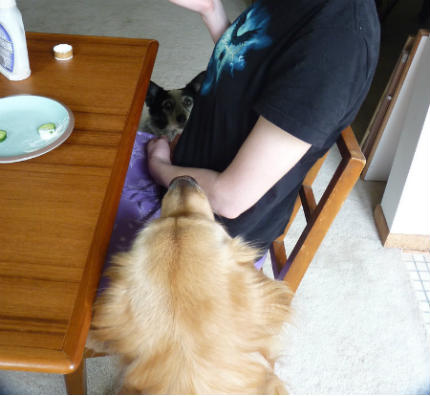As with humans, emotions play an essential role in the health of our pets. Especially in dogs because they are identified by nature as very sensitive animals.
Depression in dogs may be more common than you think and, many times, it may go unnoticed, since the symptoms that occur when it appears are not considered important. Some dog breeds have the ability to sense when their owners are sad or tired, and use their sweetness to shower them with love and company, which is very effective.
But what to do when our dog is depressed? As good experts on the behavior of our pets, suspecting that something is wrong should be cause for attention. Noticing him sad or discouraged may be indicative of possible depression in the canine. For this reason, we have dedicated this article to depression in dogs, what are its symptoms, main causes and how to cope with this condition with pets. Be sure to read this important information that will help you identify this condition in your dog and how to treat it so that your best friend is a cheerful and happy pet again.
Causes of canine depression
The causes of depression in dogs are varied. Situations such as an episode of stress or anxiety, or even a change in your routine, can be triggers for a depressive process. Let's look at some of the
most common causes :
Loneliness or boredom
One of the main provoking protagonists of this state can be loneliness or boredom. This is due to
inattention on the part of the owner or family members, many hours alone at home, or lack of walks or games. Generally, this situation generates anxiety and negative behavior in dogs, such as depression or rebellion.
Replacement feeling
Whether due to the presence of a new pet, or the arrival of a new member to the family,
dogs can feel displaced or replaced in the eyes of their owners by this new company. Which generates sadness and discouragement in him. Trying to make him feel the love of his loved ones, our company and encouraging coexistence with the new pet (if applicable), or not displacing him in front of a new baby is essential to avoid these episodes.
Loss of a loved one
The loss of a person or a close animal, with whom they carried out different activities, can be the cause of this state in dogs, since they notice the absence of their companion. Trying to cope with this situation by doing the same things that the canine used to is very effective in avoiding this disorder at this time.
Change of home or family
A trip, a move or a change of family can be an aspect that causes depression in dogs. Keep in mind that the dog goes through an adaptation process that requires your attention and help.
Disease
Suffering from an
illness that makes it difficult to continue his routine of games and walks, among many other activities he carried out, is, without a doubt, an original aspect of this disorder. Generally, as a dog's health improves, so should its mood. These are some of the most common causes of canine depression, the essential thing is to avoid the presence of each of them, or know how to manage them, in order to keep our dog in a positive state of mind.
Symptoms
Identifying when a dog suffers from this condition is not an easy task, either because the
manifestations and changes in its behavior are not considered relevant or because it is mistakenly thought that the canine is trying to attract attention. It is important to say that depression represents a serious problem for the dog's health. If left untreated, it can even lead to death. Hence, identifying the symptoms that indicate its presence is essential.
A dog may be experiencing depression when:
- Does not eat
- He looks sad
- Sleep all day
- Appears little affective
- Do not play
- He does not answer his owner's call
- Hides in lonely and dark places
- Presents behavioral changes
These are some of the most common manifestations that our dog usually presents when experiencing depression. Apathy, reluctance and anxiety are the most repeated consequences of this emotional condition that affects the life of our paths. If you notice some of these signs in your pets, going to a veterinarian will be the most recommended step to treat the disease and improve the emotional health of your best friend.
Treatment and prevention of depression in dogs
Both the treatment and prevention of this psychological condition are intended to ensure a better quality of life and well-being for the canine. And ensure its owner a healthy, happy and active pet to enjoy different activities together. In the case of treatment, it will depend on the degree of the disease. If it is a serious process, the veterinarian will dictate the measures and drugs necessary for recovery.
However, the first and most important step is
to identify the cause of the depressive condition , because if it is one of those mentioned, it is possible to treat it mostly without the need for medication. Paying more attention to the pet, practicing stimulating games, walks and filling it with love are, in most cases, enough to reduce canine depression, when it is a mild case. Consulting at all times with a specialist in this situation will allow it to be handled in the best way and taking the appropriate steps in the recovery of the canine. In any context, the love and health of our pets is linked to the attention and care provided in all aspects. That is why a determining key to preventing this disease is to maintain a balance between these factors, in order to have a healthy and happy dog.
More curiosities about canine health:

















